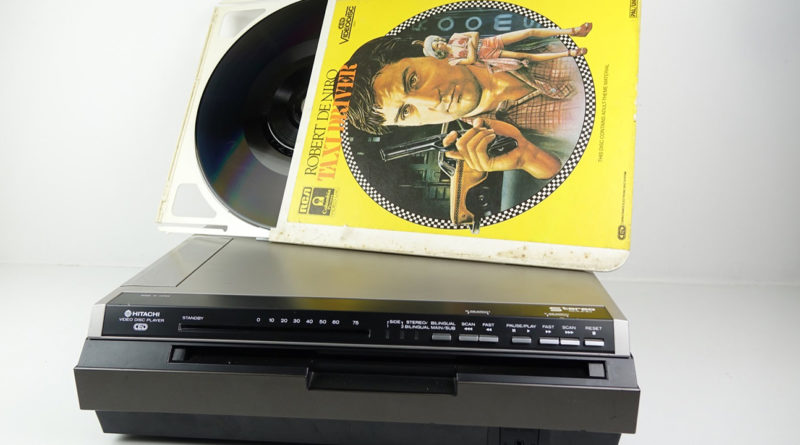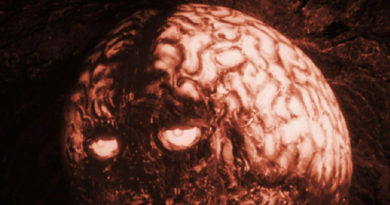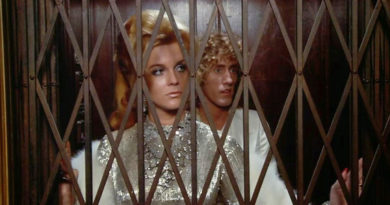Vintage and Bizarre Audio-Visual Creations
Ever since I was a little kid, I’ve always been fascinated with the kind of audio-visual equipment that makes sound and/or pictures. My childhood memories are filled with Give-A-Show projectors, Close-n-Play record players, View Masters and other primitive entertainment devices which nevertheless sparked my young imagination.
I was always especially excited because my parents know how much I was into it, and I was sure to find yet another gift under the Christmas tree or at my birthday party to thrill my electronically-oriented mind. Even in school, when the teacher ran those beat-up old educational films, I preferred to watch the machinations of the 16mm projector instead of the movie itself.
One of the wonderful things about the Web is the ease with which you can research such ephemera and discover some surprising things along the way. Here’s a stream-of-consciousness list of some unique, strange and downright ridiculous inventions that I uncovered. Here are a few of them:

IN-DASH CAR STEREO?
In 1956, Chrysler brought the first in-dash record player to the American automobile market. Dubbed the Highway Hi-Fi, it only lasted a year because of several roadblocks.
First, it required special records, so users had to buy their favorite tunes all over again in the new format. Second, the Highway Hi-Fi was only available in new vehicles, not as an aftermarket item, so that slowed down adoption considerably.
Finally, the device tended to break down frequently, and Chrysler didn’t want to provide all that costly maintenance since the cars were still under warranty.
How did a record play in a car without skipping all over the place, you may ask? The special Highway Hi-Fi discs moved at a slower speed than regular records and the turntable and tonearm were elaborately padded and counterweighted to prevent skating. But think of how bad the fidelity must have been. As a rule, the slower a record turns, the poorer the quality is. Ever heard a 16 rpm record? More hissing than a nest of snakes.
RCA tried it again in 1960 with regular 45 rpm records in a jukebox setup and Phillips tried aftermarket turntables, but the advent of tape cartridges quickly put an end to the experiment.
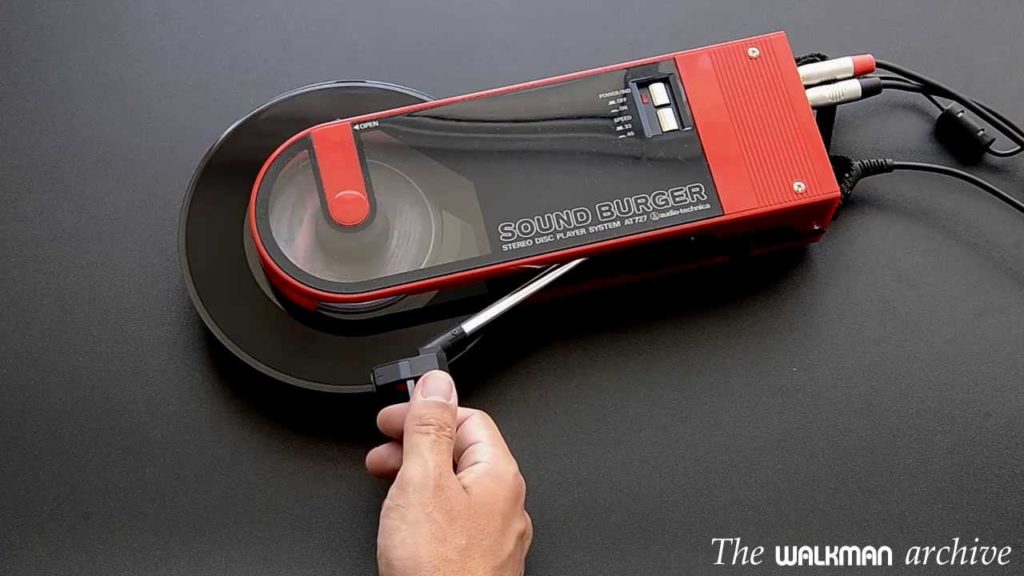
VINYL WALKMAN
In the 1980s, the popularity of the cassette tape-based Sony Walkman gave birth to the ultra-bizarre Sound Burger from Audio Technica. Essentially a portable record player capable of playing 33 1/3 and 45 rpm discs, it worked as a spinning clamp with the tone arm affixed to its side.
You couldn’t jog or walk with the Sound Burger, however — it required a flat surface to play properly. There were no speakers, but it came with the earbuds that have become so ubiquitous with the advent of iPods (and which still don’t fit in my ears). It also had a built-in preamp and audio jacks so that speakers could be connected directly to it.
Surprisingly, the sound quality of the Sound Burger is supposed to have been very good, and it’s coveted by collectors of vinyl ephemera. You can find them on eBay from time to time, but they’re not cheap. Crosley, the company that sells reproductions of classic turntables and record players, offered an updated version in 2010, renamed the Revolution (get it?), but it has also been discontinued. If you hunt around, though, you can still find one on resellers like eBay, Amazon, NewEgg, etc.
No, I don’t know why it was called a Sound Burger. It looks more like an outdoor thermometer.
Polaroid, the instant film company that has gone through many hands, is evidently giving it another shot with a brand-new line of its old-school style of One Step cameras and film, offering instantly-developed print pictures, just like the 1960s Swinger. In its attempt to cash in on the nostalgia wave, I wonder how the new company is doing?
Polaroid attempted to cash in on another wave — the then-booming super 8mm filmmaking market in 1977. The company introduced Polavision, a cartridge-based system that could shoot and process instant movies. Yes, instant movies! Instead of taking the unexposed cartridges to your local drug store for developing and anxiously waiting a few days for the results, you could see them more or less immediately.
You’d put the cartridge into the camera, shoot about three minutes worth of footage and then insert it into the included TV set-style player, causing the chemicals in the cartridge to activate and the development to commence. But what you got was a mess. Since the developing was automatic, no human hands rinsed the footage, so the film’s imagery was very dense and horribly stained. It was awful.
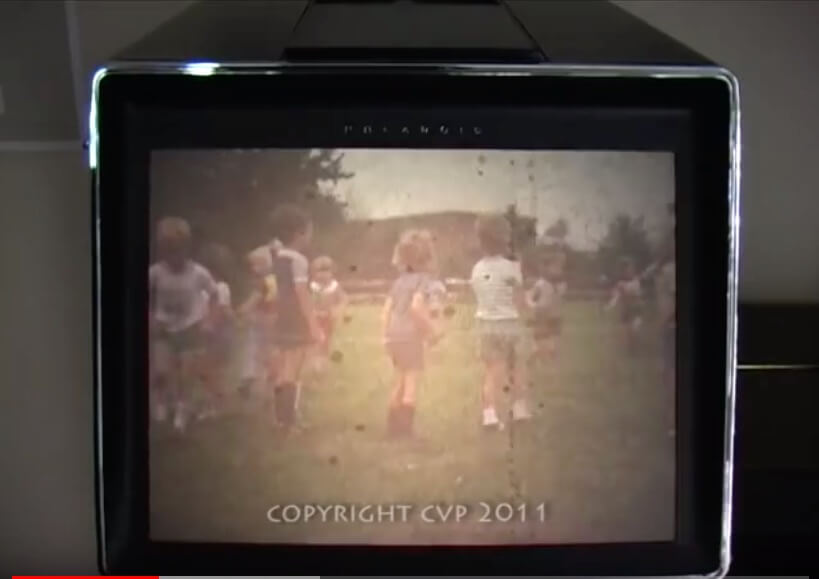
The special Polavision viewer was the only way to watch the processed movies, so what you saw was a tiny, flickering, dark and silent television show instead of a bright, large projection with sound that was easily attainable with conventional super 8mm movie cameras and projectors of the time.
You just needed to have the patience to wait the week for developing. Hell, if you were lucky enough to live in Los Angeles, you could have your film developed overnight for certain stocks, or even in just a couple of hours for the more popular ones.
The real nail in the coffin for Polavision, besides its clunkiness, muteness and bad image quality, was its unfortunate introduction at the dawn of the home video age, when VHS and Beta rendered such a format completely unnecessary.
It’s “like a holiday-maker trying to force his suitcase shut.”
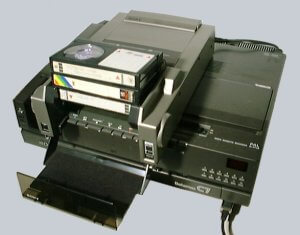
In 1981, as the home video format wars (VHS versus Beta) were well underway, Sony introduced a piece of equipment intended to level the playing field and address the recording time discrepancy between Beta (two and a half hours) and VHS (three hours).
Known as the Betastack, this bizarre device clamped onto the top of a normal Beta VCR, allowing it to record onto four tapes sequentially, expanding the time substantially.
The website Total Rewind hilariously describes it as being a Rube Goldberg-type apparatus with whirring motors, pinging springs and mechanical fingers that push the buttons down on the VCR. It’s “like a holiday-maker trying to force his suitcase shut,” the site says. Best of all, if there are already three tapes in the tray, ejecting the fourth throws the top tape onto the floor.
The Betastack was designed for only one model of VCR — the Sony SL-C7 — and it never made significant headway into the marketplace, needless to say. I’d love to see one in operation.
It’s amazing to me how pervasive the love of nostalgia has continued to grow on the internet. Small format film never went away. I’m still buying and selling super 8mm stuff on eBay, and vinyl records have clearly made a comeback. All my favorite bands release their new stuff on vinyl, and I’m a snob about that. But there are several Facebook groups that are happy to collect, trade and continually talk about laserdiscs, tape, audiocassettes and even CED videodiscs, certainly the worst disc format ever offered to the public.
The nostalgia vibe is strong with these folks, though, and I don’t knock them. It’s fun to watch an old VHS horror movie now and then to see the Media Home Entertainment logo and a pan-and-scan, green print that’s dancing with artifacts, but I’m not sure I need to recreate an entire collection of old Big Box tapes.

